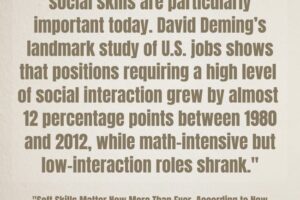
Is Higher Ed Broken?
During the recent government shutdown, I bravely traveled to Philadelphia for the annual meeting of the Association of Public and Land-grant Universities’ annual meeting. Then I hung out at Bryn Mawr College, where Marjorie Hass, president of the Council of Independent Colleges, gave a fantastic talk about curriculum to a big group (that included not that many faculty). Finally, I Amtraked up to a conference at Drew University in New Jersey. In one week, I made the rounds of what most people think of as “college.”
In my role as creator of Inside Higher Ed’s wacky weekly newsletter The Sandbox, I go to plenty of higher ed conferences. The Drew gathering was a horse of another color. It convened 150 people from various sectors of learning—tech gurus, mentorship experts, K–12 educators, innovators in experiential learning, those who have started new organizations and institutions—to talk about the future of higher ed.
The Drew convening opened with a talk by Michael Horn of the Harvard Graduate School of Education. As a reminder, in 2013, he and Clayton Christensen predicted in a New York Times op-ed that online education was going to disrupt our sector and that 25 percent of struggling colleges and universities were going to close. He presented new research that shows dozens of brand-name schools in New England could now be in deep financial doo doo.
One of the questions at Drew was “What is the purpose of higher education?” If you ask faculty, the answers are likely to loftily uphold ideals we all believe: to open minds, spark curiosity, even help build citizens who will maintain our (endangered) democracy. Most will rightly claim that colleges and universities are engines of economic opportunity.
When I asked my students at a regional public what they wanted out of their education, they parroted these ideas. They came to be challenged, to meet people unlike themselves, to think differently. College, they complained noted, instills discipline and helps them ease into adulthood. Most believed in the value of a traditional liberal arts education.
This is not surprising because, well, they’re college students and they’ve been chugging the Kool-Aid we serve them. We live these values when they come to our campuses. My old friend Stanley Hauerwas, the potty-mouthed esteemed theologian, used to say in typical fashion, “I don’t want my students to make up their goddamned minds; they don’t have minds worth making up until I’ve taught them.” Coming to college can feel for many the way Dorothy did when she went over the rainbow. Life goes from drab sepia tones to a Technicolor.
Twenty years ago, when I won the lottery became faculty, things were still pretty Emerald City–esque. I had landed a tenure-track job after a couple different careers as a nine-to-fiver. What a luxurious and privileged position! How many other employees have this kind of flexibility, job security and, well, lack of accountability?
But boy howdy, we’re back in dusty Kansas.
Because here’s the thing: As enrollments drop, state and federal support withers, and philanthropic dollars are necessary to keep our citizens safe, fed and healthy, the number of faculty at most institutions has remained mostly unchanged while expenses continue to rise. This is a math problem a fifth grader could solve. We need to adapt if we want to continue to prepare the next generations to keep our country going.
A handful of elite institutions have turned themselves into high-end brands, with people mistaking exclusivity for excellence and the national media mistaking them for the whole sector, fueling the rankings arms race and copycat syndrome.
Meanwhile, most of us are stuck in the messy middle, trying to do everything everywhere all at once. Research, workforce training, student life, athletics, DEI, study abroad, mental health—missions layered like geological strata. The result? Silos, identity crisis, bloat and burnout.
The sad truth is that few people outside academe are convinced we’re doing a good job. That includes not just the disaffected without degrees who were told they were losers if they didn’t go to college, but plenty of professionals who did and are still paying off debt and are not convinced their kids should follow that path. Plus, the children of privilege are dropping out of fancy-pants schools to work at start-ups. For many young people, the choice now is not which college to attend but whether to bother going at all.
There are still plenty of folks who want access to more education, and we have to remember that most degree seekers aren’t of traditional college age. But that doesn’t mean even they want to buy what we’re currently selling. There are nearly 4,000 institutions of higher learning in this country. Some will survive, others will thrive, and for some, it may end up looking like the Hunger Games.
At dinner with a dozen presidents this fall, one told a story that captured how resistance to current reality can end. That president had been warning his faculty about the financial cliff ahead. They either didn’t believe him or couldn’t be bothered to figure out how to change. Then he told them the school was closing and handed out pink slips. That’s what happens when you wait for someone else to solve the math problem.
Those in the group that Michael Horn and Clay Christensen said were going to go belly up—small privates and regional publics—are going to have to do some hard rethinking and find a way to be something other than, in the formulation of Jeff Selingo, “Comprehensive U.”
We’ve been able to muddle through with tiny ivory towers on each campus: disciplinary niches, departments, divisions, colleges. The world, however, does not follow the ways of our little chessboard pieces that each move in their quirky little ways.
We are in the midst of some serious paradigm shifts, folks. Not just in the last two decades, but in the past two years, since AI began to change every aspect of life as we know it, whether you like it or not (and yes, I know that many do not like it and stick their fingers in their ears saying la la la I can’t hear you).
This is why the Drew convening felt like going from sepia tones to Oz. If there was a man behind the curtain, it was the visionary president of Drew, Hilary Link, whose scholarship on the Renaissance shows that we already have within us what we need, if we’re only able to see from a different perspective. This perpetual learner has been on an 18-month journey asking questions of all different types of thinkers and trying to figure out where to go next. The convening was a first step in consolidating what she’s learned, backed by a university board that understands the survival challenges and prizes boldness.
In the final session, President Link asked me to talk about innovations I’ve seen as I talk to presidents around the country. The sad truth is that while there are many creative leaders well aware of the need to change, they face resistance from the usual suspects.
Boards are often filled with well-meaning and accomplished people who went to college in another era and may not understand much about our current environment.
And faculty cling to traditions that define their own legitimacy. The Angry Eight (or Furious Five or Irate Individual) on a campus can stop brilliant ideas in two sessions of the Faculty Senate. And while these longtime faculty members try to burn it all down, they rarely come up with realistic and informed solutions to move forward.
Because of resistance from above or below, institutions are cycling through presidents faster than drug-aided Lance Armstrong could pedal, leaving little time for anything but triage. Finding good examples of meaningful innovation is hard.
So, I pointed to a quirky example that has caught my attention. The Community Solution Education System consists of six private, previously independent not-for-profit institutions that act as one entity. They share infrastructure and an overarching mission while maintaining their individuality. This approach takes aim at the real obstacles: redundancy, inefficiency, low morale, leadership churn and the isolation that keeps colleges from learning from one another. It smashes the silos.
Shared services for essential stuff—HR, IT, procurement—free up resources for student services. Networks of presidents and provosts who actually talk to one another about practical, scalable solutions. Small, niche-y colleges get the efficiencies of large ones without losing their soul.
Collaboration and radical cooperation, not competition, might be higher ed’s best survival strategy. The Community Solution proves that shared purpose doesn’t have to mean sameness. It’s one of the rare higher ed innovations not about shiny tech or brand reinvention but about rebuilding the scorched environment of the ecosystem itself.
The ground beneath us is shifting faster than ChatGPT could rewrite this essay. One of the speakers at the meeting in New Jersey aptly quoted the boss. Bruce Springsteen sang, “I can’t tell my courage from my desperation.” Yep. As long as it motivates you to get shit done, does it really matter which one it is?
Source link



